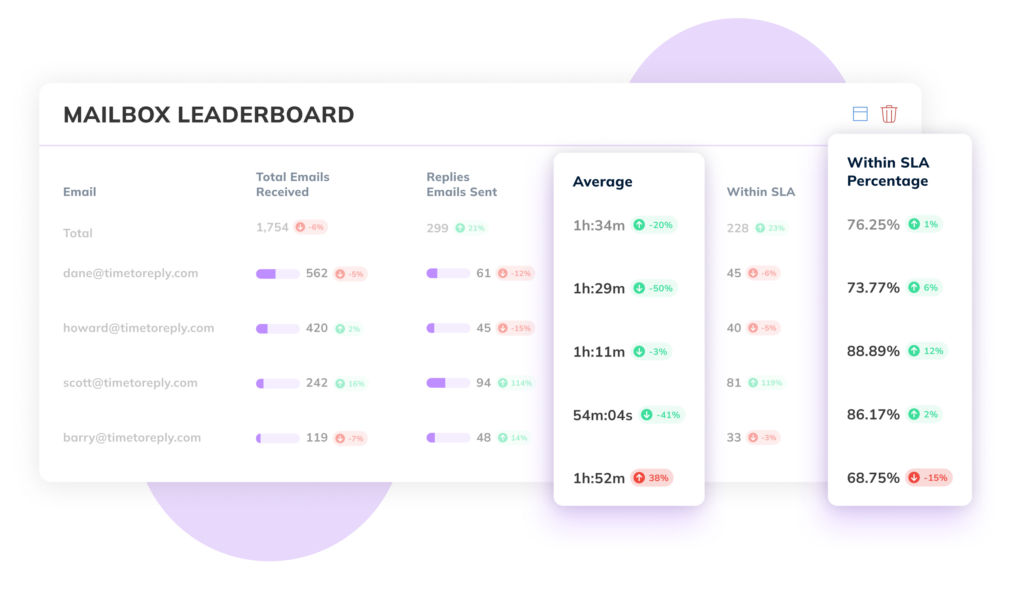Discover best practices for sending follow-up emails and learn how long to wait for a reply. Our expert tips help you build stronger relationships with your customers.
Cold emails and follow-ups can be an effective strategy in a sales and customer service context, but it’s important to approach them in the right way to ensure that you’re not spamming or annoying your customers.
Cold emails are unsolicited emails sent to potential customers who have not expressed interest in your product or service. When writing cold emails, it’s essential to keep in mind that you’re starting a conversation, not making a sale. Your goal should be to pique the recipient’s interest and start a dialogue that could potentially lead to a deal.
Knowing how long you should wait before following up on a cold email can be hard. The appropriate wait time can vary depending on the situation and the recipient. However, a general rule of thumb is to wait at least 3-5 business days before sending a follow-up email.
It’s important to keep in mind that people are often busy and may not have had a chance to read or respond to your email yet. Sending a follow-up email too soon can come across as pushy or impatient and may even harm your chances of getting a response.
Suppose you still haven’t received a response after 3-5 business days. In that case, you can send a polite follow-up email to check in and see if the recipient had a chance to review your email. In your follow-up email, you can reiterate the key points of your initial email and ask if you can provide any additional information.
Remember to always be respectful and professional in your communication, and avoid being pushy or aggressive in your follow-up emails. By following these guidelines, you can increase your chances of getting a response while maintaining a positive relationship with the recipient.
Writing a follow-up email that gets a reply can be challenging, but by following these expert tips, you can increase your chances of getting a response:
Your follow-up email should be concise and easy to read. Avoid long paragraphs or overly complex language.
In your follow-up email, try to provide additional value, such as sharing a relevant article or offering a new perspective on the topic.
Start your email by referencing your previous email and mentioning that you’re following up.
End your email with a clear call to action, such as requesting a meeting or phone call.
Always be respectful and professional in your tone, even if you’re following up multiple times.
Don’t be afraid to follow up more than once if you don’t receive a response. However, always be respectful and polite in your tone.
If you’re following up on a request or deadline, provide a specific date by which you need a response.
Remember that your follow-up email aims to continue the conversation and build a relationship with the recipient. By following these best practices, you can increase your chances of getting a response while maintaining a positive and professional relationship with the recipient.
Deciding how many follow-up emails to send and how often to send them can depend on the situation and the recipient. However, here are some general guidelines to consider:
If you don’t receive a response to your initial email, it’s appropriate to send at least one follow-up email to check in and see if the recipient had a chance to review your email.
Give the recipient enough time to review your email before sending a follow-up. Sending a follow-up email too soon can come across as pushy or impatient.
In most cases, following up two times is appropriate. If you still haven’t received a response after two follow-ups, it may be best to move on.
If you decide to send multiple follow-up emails, space them out by at least a few days. This shows that you respect the recipient’s time and are not too aggressive.
Remember that each situation is unique, and the number of follow-up emails you send should depend on the context and relationship with the recipient. Generally, it’s important to be respectful and professional in your tone and not too pushy in your follow-ups.
timetoreply is a tool that can help your business with cold emails and follow-ups by providing valuable insights and metrics on your email communication. Here are some ways timetoreply can help:
timetoreply tracks your team’s email response times, so you can see how long it takes to respond to cold emails and follow-ups. This helps you identify any bottlenecks or areas for improvement. timetoreply works with your existing email to give you analytics on how well your team members are handling their email enquiries.

You can use timetoreply to track individual team members’ response times and performance. This helps you identify top performers and those who may need additional training or support. By using timetoreply’s email response management software you can manage workloads and resources by understanding email volumes and peak times.
Responding quickly to cold emails and follow-ups can improve customer satisfaction and build stronger customer relationships. timetoreply Success is a potent email performance optimization & analytics tool designed to increase customer satisfaction.
Help your sales reps nail their follow-ups and follow-up cadence with timetoreply Ignite. Identify hot leads and respond to them quickly, increasing your chances of closing a sale. According to a study by the Harvard Business Review, companies that respond to sales inquiries within an hour are seven times more likely to qualify the lead than those who respond after an hour. The company that is quickest to respond has a higher chance of winning the sale. We help you be that company!
With timetoreply, you can set benchmarks and goals for response times and track progress over time. This helps you continuously improve your email communication and customer service. Customers who receive good service are more likely to become loyal to your brand and make repeat purchases. This can lead to increased sales and revenue over time.
We purpose-built timetoreply to help businesses optimize email communication, improve customer satisfaction, and increase sales success. Try it for yourself with our 15-day free trial.



Trusted by high-performing inbound sales teams and customer-facing teams globally.
Close more deals and delight more customers with the faster, smarter, deeper email analytics and performance optimization software that works straight from your team’s inbox.